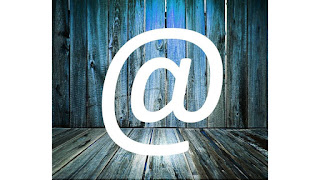 Your social media accounts all communicate messages about your personal brand - who you are and what you stand for. Your Profile Picture is a key element in this. Face perception is one of the most highly developed skills in humans, influencing how we judge someone's trustworthiness, enthusiasm and competence. It is important to have a profile picture on your accounts - research shows that you are 7 times more likely to be considered for a job if you have one. However, ensure that the picture you select says what you want and need it to say. Don't use a selfie, don't wear sunglasses, a head & shoulders shot is superior to head only, and (as noted in an earlier tip) ensure that your head is in a straight, upright position, not tilted.
Your social media accounts all communicate messages about your personal brand - who you are and what you stand for. Your Profile Picture is a key element in this. Face perception is one of the most highly developed skills in humans, influencing how we judge someone's trustworthiness, enthusiasm and competence. It is important to have a profile picture on your accounts - research shows that you are 7 times more likely to be considered for a job if you have one. However, ensure that the picture you select says what you want and need it to say. Don't use a selfie, don't wear sunglasses, a head & shoulders shot is superior to head only, and (as noted in an earlier tip) ensure that your head is in a straight, upright position, not tilted.
Thursday, December 31, 2015
Tip Thursday - Personal Branding
 Your social media accounts all communicate messages about your personal brand - who you are and what you stand for. Your Profile Picture is a key element in this. Face perception is one of the most highly developed skills in humans, influencing how we judge someone's trustworthiness, enthusiasm and competence. It is important to have a profile picture on your accounts - research shows that you are 7 times more likely to be considered for a job if you have one. However, ensure that the picture you select says what you want and need it to say. Don't use a selfie, don't wear sunglasses, a head & shoulders shot is superior to head only, and (as noted in an earlier tip) ensure that your head is in a straight, upright position, not tilted.
Your social media accounts all communicate messages about your personal brand - who you are and what you stand for. Your Profile Picture is a key element in this. Face perception is one of the most highly developed skills in humans, influencing how we judge someone's trustworthiness, enthusiasm and competence. It is important to have a profile picture on your accounts - research shows that you are 7 times more likely to be considered for a job if you have one. However, ensure that the picture you select says what you want and need it to say. Don't use a selfie, don't wear sunglasses, a head & shoulders shot is superior to head only, and (as noted in an earlier tip) ensure that your head is in a straight, upright position, not tilted.
Monday, December 28, 2015
When Push Comes to Shove
Who are you... when push comes to shove?
What are you capable of?
... Why wait until then?
We are far more capable of far more things than we are living. Usually it is our own limiting beliefs about ourselves that create the restrictions keeping us from doing and being what we can. However, it is in difficult moments, when we are forced to take actions that move us beyond these limiting beliefs, that we gain insight into our true potential.
... Why wait until then?
Why wait until we are forced into taking action? Why not step into our potential now?
Think of all you could be doing, think of all you could be feeling, think of all you could be living... if you embraced all you were capable of... now.
Our fears and limiting beliefs prevent us from taking the steps in self discovery that are required for us to move into all we can be. Those steps aren't always easy, which is why it often requires a personal challenge to provide the push and the shove to get us moving. Even then, some will dig in their heels, steadfastly refusing to release what they know to embrace the inevitable change that growth requires.
Many harbour too many self-doubts to let-go and move forward, choosing instead to believe the "I-don`ts" and "Ì`m not`s". Too many of us have a loud and strong inner voice that doesn't hesitate to share what we are not, drowning out the voice that is trying to share all that we are. When faced with situations that pressure us to take action, we rise above the I-can`ts by lending our inner champion a microphone, allowing its chants of I-am, I-can, I-will to to lead us forward. For that situation, that moment - we become.
If you can do it and be it then... you can do it and be it all of the time. Why wait for a crisis to be all that you can, to step forward into yourself? What life would you be living today if you stepped into all you could be?
Who are you... when push comes to shove?
What are you capable of?
Why wait?
Thursday, December 24, 2015
Tip Thursday - Body Language
 A unique gesture that seems to have little evolutionary reasoning or explanation is the tongue jut. This is a completely unconscious gesture where you stick out your tongue slightly, clasping it lightly between the teeth. this is usually a cue that the person has either been caught making a mistake (or faux pas) or they think that they have gotten away with something. It therefore can be a playful gesture, or a clue that the other party feels that they have pulled something over on you. The situation should tell you which is the case!
A unique gesture that seems to have little evolutionary reasoning or explanation is the tongue jut. This is a completely unconscious gesture where you stick out your tongue slightly, clasping it lightly between the teeth. this is usually a cue that the person has either been caught making a mistake (or faux pas) or they think that they have gotten away with something. It therefore can be a playful gesture, or a clue that the other party feels that they have pulled something over on you. The situation should tell you which is the case!
Monday, December 21, 2015
Speaking Up and Out
 Your voice is a tremendous communication tool. Not only is it a primary tool in helping you to share your content, but it also serves to underscore what you think and feel about your content. Additionally, it helps direct how your audience should think and feel about it too. Is your voice an asset or liability to your communication strategies?
Your voice is a tremendous communication tool. Not only is it a primary tool in helping you to share your content, but it also serves to underscore what you think and feel about your content. Additionally, it helps direct how your audience should think and feel about it too. Is your voice an asset or liability to your communication strategies?Unfortunately, few of us take the time to truly assess whether our voice works for us or not, let alone work with our voice to improve what it is saying. Given that it alone is responsible for conveying 30 percent or more of the takeaway message of our audience, failing to utilize it fully is leaving a significant part of our communications to chance.
Many communicators struggle with determining how to create a more powerful voice, often mistakenly equating it with greater volume. However, speaking louder, especially shouting, tends to sound more autocratic and demanding than it does powerful. If you are looking to move and influence your audience, then learning to use your voice more strategically may prove to the best investment you can make.
When it comes to learning how to develop your voice and make it a more powerful and strategic tool, you need to focus on the 3 P's...
1. Personality. Consider what your personality is. It has an imprint on your voice, serving to 'tell' others far more about you than you may think. However, it does mean that we want to emphasize the messages that serve us, and reduce those that don't. Having an understanding of what your personality is, along with clarity on your desired Branded Image, will help you to target those vocal elements that are working in conjunction with your Brand, and which elements detract from it. Use recordings of your voice to become more familiar with your use of Speed, Volume, Variability, Rhythm and Tone and what each is saying about you. Then being playing with each to modify the resulting messages.
2. Passion. Don't make the mistake of thinking that demonstrating Passion for your topic requires the use of Pom-poms and cheerleaders. Passion need not be loud or brash. It is an intensity that helps to communicate your Intent. What do you feel about this subject? What do you want your audience to feel about it? Passion is therefore typically going to be displayed as and through emotion. You must be prepared to show your audience you care if you want them to care.
3. Projection. There is no voice without air. It stands to reason then that the amount of breath available drives the amount of voice. Our posture (yet another "P" to be mindful of!) is directly linked to the amount and quality of our voice. To project our voice we need to utilize our belly muscles. However, if we are hunched over or compressing downward into our spines with poor posture, we no longer are able to breathe from the belly and must now attempt to speak only with air available from our upper chest. If you find that you speak too quietly you likely breathe too shallowly. Practice breathing into and from the bottom of the lungs, using your diaphragmatic muscles (your belly muscles) to push the sound up and out of you. The added benefit of breathing from the diaphragm is that you will also have a slightly deeper pitch and a rounder, more complex sound.
The easiest way to improve your vocal quality is to start playing with it, recording your attempts. Listen to your voice as it is now. What does it say about you? What elements work? What elements don't work as well? What could you try instead? How do each sound when you try them out?
One of the first changes that is typically needed is to simply learn to relax your voice. Our best voice occurs when our throat and jaw muscles are completely relaxed. Tension in these areas can make our voices sound harsh and squeezed. To help you relax these muscles... Yawn. Yawn as big as you can, opening your mouth as wide as you can and dropping the jaw fully. Finish the yawn with a long 'hum'. If you record your voice prior and then immediately following the yawn exercise you should hear an improvement, simply from speaking from a more relaxed position.
Another exercise to play with is one that is designed to help you shift your breathing to the belly. We always speak on the exhale, so you will start this exercise after an inhalation. Breathe into the belly (should see the belly go out) and then begin reciting the alphabet - letter by letter. When voicing each letter contract the belly muscles as sharply as you can, which will expel a small burst of air, which is when you articulate the 'letter' you are on. Do this for the entire alphabet.
Our voice is a tool to help us to be heard. However, it can do much more than to simply share our content, it can help drive the way our audience experiences our messages. We can use our voice to direct how they might think or feel about the information we are sharing, or to even motivate them to take action. If we are focused only on our content and not on the way we deliver it, then we are missing the opportunity to make our content memorable and for us to stand out.
Thursday, December 17, 2015
Tip Thursday - Email
 Your email address is often the first thing that people see about you and is therefore an important part of the personal brand that you're building. When job searching it is critically important. In recent studies it was found that many employers don't even look at some candidates when they possessed 'cutesy' email addresses. Let's face it, an address like zombieslayer@gmail.com is not going to get you taken seriously for a corporate gig - unless it happens to be in the gaming or zombie-slaying fields! Keep it professional and keep it appropriate. As an added note, it should go without saying that you would not use an email address from your current employer when forwarding resumes to potential future employers. I don't know why, but they seem to take umbrage with the fact that you are spending time at your current job looking for a new job. Always use a personal email and always keep it professional.
Your email address is often the first thing that people see about you and is therefore an important part of the personal brand that you're building. When job searching it is critically important. In recent studies it was found that many employers don't even look at some candidates when they possessed 'cutesy' email addresses. Let's face it, an address like zombieslayer@gmail.com is not going to get you taken seriously for a corporate gig - unless it happens to be in the gaming or zombie-slaying fields! Keep it professional and keep it appropriate. As an added note, it should go without saying that you would not use an email address from your current employer when forwarding resumes to potential future employers. I don't know why, but they seem to take umbrage with the fact that you are spending time at your current job looking for a new job. Always use a personal email and always keep it professional.
Monday, December 14, 2015
What is Your 'Resting Face' Saying About You?
 Our faces are rarely without expression, showing others whether we are: happy, sad, angry, excited, disgusted, fearful, interested, bored, passionate, skeptical... our faces say it all. In fact, we have 44 different muscles in our faces, which are capable of over 10,000 different expressions.
Our faces are rarely without expression, showing others whether we are: happy, sad, angry, excited, disgusted, fearful, interested, bored, passionate, skeptical... our faces say it all. In fact, we have 44 different muscles in our faces, which are capable of over 10,000 different expressions. It is the part of our body that most people look to in order to gauge our reaction to events. If they are trying to 'read' our thoughts, it is typically by trying to determine what our facial expressions are telling them. Is is any wonder then that when we are trying to be less transparent with our thoughts, we will seek to control our facial expressions most. We become much less animated and seek to reduce our facial affect to make us less 'readable'.
However, it is important to note that people are 'reading' us all of the time. Human beings are hard-wired into picking up on the non-verbal messaging cues of others, often taking in information at an unconscious and gut level. If we are looking to manage or control the take-away messages others have of us, we must become more consciously aware of what our non-verbal cues are saying.
Most times, when we are attempting to mask a certain message (such as nervousness) we will flatten our outward affect. In essence, we force our face to adopt a 'neutral' expression. Our 'neutral' is always our 'resting face'. This is the expression that our face assumes when we are, in essence, at rest, when we are not thinking anything in particular, are not feeling anything in particular. Our 'resting face' is our non-face. It is the expression we adopt when we are actually not expressing anything. As our personal neutral, it will typically be our go-to expression when we are attempting to mask or hide a certain signal or cue.
However, each person's neutral is actually far from it. Others will always 'see' something in your expression. It is therefore important that you spend some time coming to understand what your personal resting face is saying about you. If it is not saying what you want or need it to say then you need to learn to adopt a new neutral expression.
When at rest, our face shifts into our comfort expression. This is the look that our face will project to the world when it is essentially - at rest. When it is not formally expressing anything. However, our resting face always communicates something.
If you find that others are always asking you if you are tire, rest assured that your resting face tends to assume a tired expression - not neutral.
If you find that others frequently ask you what you're mad about, your resting expression likely tends to look angry - not neutral.
If people think that you are typically happy, it is likely that your resting expression always projects a slight smile, which is not neutral.
In order to ascertain what messages your resting face may be inadvertently sending about you...
- look at pictures of you taken during unguarded moments and determine what expression you tend to have on your face - more often than not
- consider what comments you typically get from others (like the three examples above) and think of the elements you hear most frequently
- spend time in front of a mirror putting your face into it's comfort place, the expression that feels like your neutral, and assess how you think you look
The consistent messages your receive from the three points above will provide you with clear insights into what your resting face has to say about you. Now consider... is it saying what you want others to hear? Is it conveying messages that work in support of your personal brand, or that detract from it?
If your resting face is not saying what you want and need it to consider what message you want it to be delivering instead. In essence, create your new neutral. Once you have gained clarity around what that fallback messaging would be, spend some time in front of a mirror identifying what that branded message would 'look' like, learning to identify then what that expression 'feels' like. What muscles are engaged? How much? How far?
You can't replicate the expression consistently if you have not developed your own personal means of measuring it. Understanding what it takes to create the expression allows you to duplicate and adopt it. The more consistently you do this, the more it will become a comfortable part of your expression repertoire, and the more likely that it will become habit.
We all have something to say about ourselves, even when we think we are not saying anything. What does your face say about you when it is at rest? If it's not a message that is serving you, then change it to one that does. It seems that even your lack of expression is a habit that you can modify to ensure that, even at rest, your face is telling others the story of you that you want told.
Thursday, December 10, 2015
Tip Thursday - Presence
Monday, December 7, 2015
Avoiding Meeting Overload
 Most people would agree that they spend too much of their work week in meetings. Typically this complaint is generated by time spent in ineffective and poorly run meetings. However, there is also a concern about the sheer number and volume of meetings that workers are being asked (and expected) to attend, such that they often have days spent moving simply from meeting to meeting, with no time in between to get any 'real' work done!
Most people would agree that they spend too much of their work week in meetings. Typically this complaint is generated by time spent in ineffective and poorly run meetings. However, there is also a concern about the sheer number and volume of meetings that workers are being asked (and expected) to attend, such that they often have days spent moving simply from meeting to meeting, with no time in between to get any 'real' work done!What options are there for those whose schedules seem to become consumed by meetings?
The following is a list of suggestions on how to handle a schedule that is dominated by Meeting Overload. Using any or all of these suggestions may help you to survive and remain productive throughout each of those back-to-back meetings.
1. Advance Strategies. Review your schedule and evaluate your planned meetings. Consider which you can Delete, Defer or Delegate. Get picky. There may be meetings that don't require your presence, you just need to be kept apprised of their findings. Perhaps there are others in your department that are better suited to attend, or who could benefit from the exposure or development opportunities attending in your stead would provide. Consider each meeting strategically to determine whether they merit your time or whether you have anything to contribute.
2. Apply Compression. Meetings are often scheduled to be longer than needed. Where you have the ability, shorten the time allotted or narrow the focus of the meeting to allow for a shorter meeting time. Most meetings automatically expand to fit the 'available' time. Reducing the time available simply pushes people to exercise a little more focus in their comments and discussions. This is more efficient, and typically far more effective.
3. Be an Outcome Advocate. Require that Agendas with clearly stated Outcomes be generated for each meeting you attend. If one isn't forwarded, request it. You should know prior to attending what the purpose of the meeting is, what the desired outcomes are and how you are expected to help achieve them. Better preparation on the part of the meeting convener will allow you (and all other attendees) to prep better, helping the meeting to retain focus. Who wouldn't love to have meetings ending early because they were targeted and well run?
4. Work to Hard Stops. Don`t enable inefficiency by allowing meetings to run late. Ensure participants understand the scheduled 'end' for the meeting and work through the agenda items with that end in mind. Don`t allow an inefficiently run meeting to play havoc with the rest of your day. Teach them to respect your time, and increase their meeting management skills, by forcing them to work to the schedule they set.
5. Consider Alternative Meeting Formats. If you have a full day of meetings ahead of you consider whether you can create a 'break' from sitting around one meeting room table after another by scheduling a walking meeting instead. These are perfect for when you are meeting with only one or two others. Getting up and moving not only recharges your batteries, but can also help to spur your creativity. Break the feeling of meeting monotony by switching up the location, the format, the structure.
6. Fuel Up. A day of endless meetings can be tiring, challenging your focus. Often we are left grabbing some food on the go or, worse yet, failing to eat at all. On the days that your schedule is overloaded, become more strategic about what food you are taking in. In this instance you need to use food as fuel, not to simply fill-up. Eat for the energy you want and need to have available for your day. Quality counts!
7. Standing Room Only. If you are looking to help shorten and target meetings more, arrange for everyone to stand throughout the meeting. Leg fatigue can help keep everyone on point and task focused.
8. Engage. The type and nature of your engagement influences your focus. If you are answering emails and addressing other issues... Why are you there? Staying focused on the discussion at hand not only helps to move the agenda items faster, it also serves to keep your energy up while also heightening your visibility and presence.
Meetings are an inevitable and integral part of the business world. However, an overload of meetings can quickly deplete your personal resources if you don't manage them, and your schedule, well. Use the above suggestions to help you avoid feeling overloaded or wanting to jump overboard.
Thursday, December 3, 2015
Tip Thursday - Body Language
 Watch out for the tendency to nod your head with too much frequency - like a Bobblehead. Head nods are often delivered in an effort to appear congenial and likeable, to be seen as supportive of the speaker. However, excessive head nodding can make you appear to be a pushover, like you stand for nothing on your own. Head nods are a great way to appear empathetic and demonstrate you are listening... just don't over-use them!
Watch out for the tendency to nod your head with too much frequency - like a Bobblehead. Head nods are often delivered in an effort to appear congenial and likeable, to be seen as supportive of the speaker. However, excessive head nodding can make you appear to be a pushover, like you stand for nothing on your own. Head nods are a great way to appear empathetic and demonstrate you are listening... just don't over-use them!
Subscribe to:
Comments (Atom)


